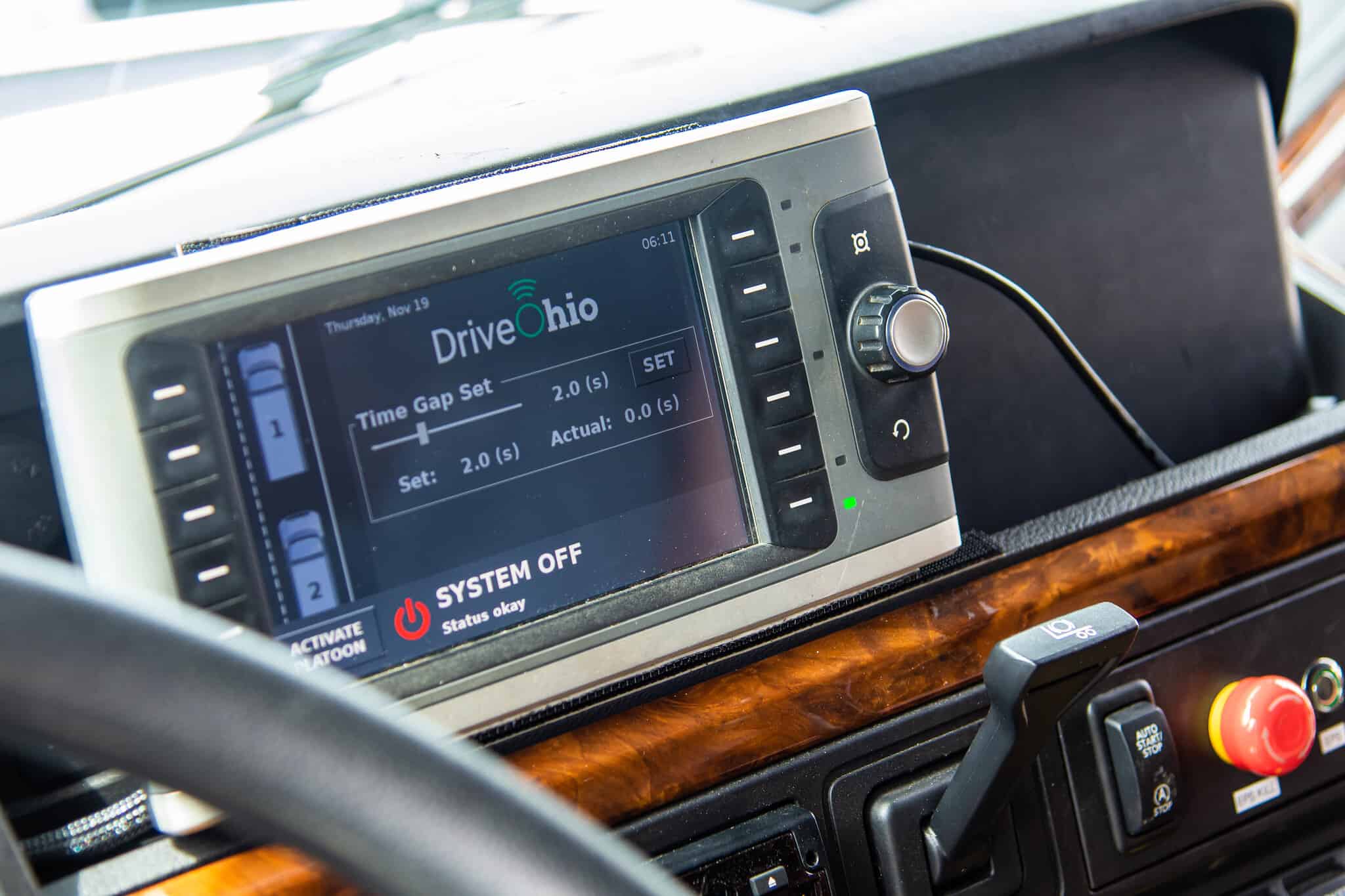
DriveOhio Deploys Automated Vehicles on Ohio Roadways
COLUMBUS, OHIO – Drivers may soon see automated vehicles on rural roadways in central and southeast Ohio as DriveOhio's Rural Automated Driving Systems (ADS) project begins two deployments to gather data that will help define future technology needs.
Automated vehicle technology is revolutionizing the transportation industry, including the way that goods move, and people travel. While most automated driving systems have been tested in urban areas, there’s still much to learn about how automated vehicles operate in rural areas when navigating around curves, over hills, and in and out of shaded areas.
"Automated driving systems are expected to transform roadway safety in the future, and the data collected with this project will be used to refine the technology to maximize its potential," said DriveOhio Executive Director Preeti Choudhary. "This critical work will provide valuable information to help advance the safe integration of automated vehicle technologies in Ohio and across the nation."
These advanced vehicles have already been tested at the Transportation Research Center Inc.'s (TRC) 4,500-acre proving grounds in East Liberty, Ohio – the nation’s most advanced, independent mobility testing and research complex. This has provided closed roadway testing over a full range of navigational situations that are encountered in everyday driving before the driving automation system equipped vehicles are taken onto public roadways and highways.
Funded in part by a $7.5 million grant from the U.S. Department of Transportation, this project aims to demonstrate how connected and automated semi-trucks and passenger vehicles could improve safety for drivers, passengers, and other travelers in rural settings. The project, which focuses on 32 counties in Ohio’s rural Appalachian region, is the most comprehensive testing effort yet to be conducted on rural roads in the United States.
“This project holds great promise for the future of transportation and the economic wellbeing of rural communities, while strengthening Ohio’s historic reputation as a world leader in transportation safety and innovation,” said Brett Roubinek, president and CEO of TRC Inc.
Automated Vehicles in Southeast Ohio
The first of two deployments includes three passenger vehicles equipped with AutomouStuff technology traveling on divided highways and rural two-lane roads in Athens and Vinton counties. They will be tested in different operational and environmental conditions, including in periods of limited visibility and in work zones. When the automated driving system is engaged, the technology will control steering, acceleration, and braking. Throughout the year-long deployment, a professional driver will always be in the driver's seat with their hands on the wheel, ready to take over if needed.
"Many vehicles on the road today already have some degree of automated driving system technologies like adaptive cruise control, lane keep assist, or emergency braking. Those systems are meant to enhance safety, but they certainly don't replace the human driver," said Choudhary.
In addition to rigorous testing at the TRC, the deployment relies on high-definition mapping of specific routes that is then verified by professional drivers before engaging the automated technology. These maps provide the advanced driving system precise information about the surrounding environment including explicit roadway characteristics such as lane widths and the location of signals, crosswalks, and nearby buildings. As this automated vehicle technology matures, it will become crucial to enhancing mobility for people in rural communities that have been historically underserved.
“The rural Appalachian area surrounding Ohio University would greatly benefit from using autonomous vehicles to deliver goods and transport people, but the road conditions are very different than urban and suburban regions,” said Dr. Jay Wilhelm, Associate Professor of Mechanical Engineering at Ohio University. “This project gives us an incredible opportunity to test automated vehicles in rural areas and gather data to demonstrate the unique challenges and work towards solutions. Our goal is to bridge the technology gap in rural Appalachian communities so automated vehicles can improve quality of life throughout the region.”
Truck Platooning in Central Ohio
The second deployment will feature a pair of 53-foot platoon-equipped tractor-trailers connected by technology that enables them to travel closely together at highway speeds. When the trucks are connected, the lead vehicle controls the speed, and the following vehicle will have precisely matched braking and acceleration to respond to the lead vehicle's movement.
The trucks used in this project are equipped with radar to detect other vehicles. This technology allows the trucks to monitor and react to the environment around them in certain ways, such as following the lead vehicle and responding to slower moving traffic; however, human engagement in the driving task is critical. Like the first deployment, a professional driver will always be in the driver's seat with their hands on the wheel.
The trucks will first be deployed on the 35-mile U.S. 33 Smart Mobility Corridor, specifically designed for testing smart and connected vehicles. Later this year, a private fleet will begin using the trucks in their day-to-day business operations.
In addition to benefits like increased efficiency and reduced fuel consumption for fleets, development of this technology ultimately aims to reduce human error, making Ohio's roads safer. The significant impact on roadway safety makes the Ohio State Highway Patrol and local law enforcement key partners in this effort.

